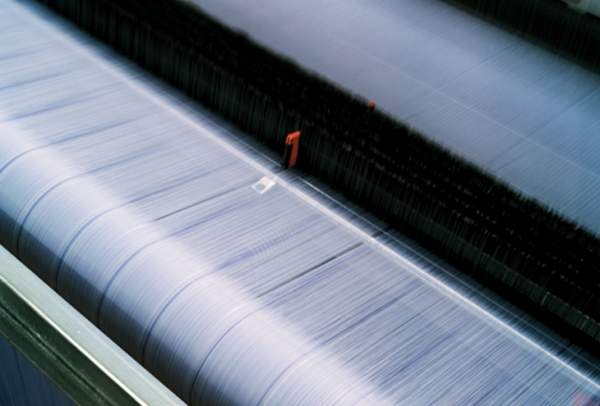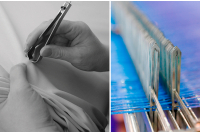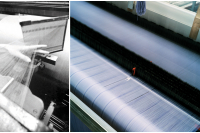
Creating a prime-quality thread from a cotton flock is an art that takes precision, experience, and expertise. In the previous post about the creation of shirt fabrics, we found out how the thread is created and dyed. Now we can look at the final stages in the production process: weaving and finishing.
Weaving
This stage begins with winding. The aim is to wind the thread around a tube. For the warp (vertical thread that weaves into the weft), cylindrical spools are used, while for the weft thread, conical spools are used to give a smoother movement over the loom.
The next stage is warping, the preparation stage for weaving. All of the vertical threads (warp) that make up the fabric are placed alongside one another to create the required design. At this point, the single threads to be woven are reinforced (sized). The single threads stand out from the twisted ones (which consist of two or more threads twisted together) for their fragile nature. This is why single threads are chemically stiffened and then dried. The final stage before weaving can get under way is threading, where the order of thread movement is set to create fabrics with different structures. Now weaving can begin: the weft thread meets the warp thread by means of a complex process using high-tech looms. At the end of this process, the product is still not ready for making cotton shirts as it is a raw fabric that will be checked by expert staff able to remove any small flaws due to the natural origin of the raw material.
Finishing
This stage begins with the preparation of the fabrics, eliminating any auxiliary substances used in the previous stages and any natural impurities still present in the fibres (protruding hairs). The result is a smooth, shiny and strong surface.
The next stage is dyeing, which may include simple solid colours or printing using various techniques (rollers, frames or ink jet). After this comes steaming, which serves to fix the colours to the fibre. This is followed by a series of washes to eliminate impurities and residues. The process ends with heat setting to regularise the mechanical tensions produced inside the fibres: this protects the shirt fabrics against shrinking.
The final finishing involves various processes to prepare the fabric according to its intended use. For example, it can be netted to form a special fuzz over the surface of the fabric, making it both soft and warm; or it can be calendered to make it smoother and shinier. All of these final stages add to the quality of the fabric and bring out the best of its characteristics.
Shirt fabrics are created using a series of special processes that make them prime quality, soft and with a certain shine. When you find yourself buying your next shirt, it will now be easier for you to recognise quality fabrics and to understand their worth, thanks to the sensation they convey to the touch.



